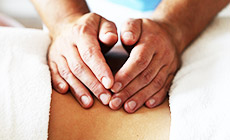A Greek term, ‘rheumatism’ means a dragging, searing pain. People of every age can be affected by rheumatism – even younger adults and children.
Rheumatology lists more than 100 different rheumatic diseases. Many of these not only concern the locomotor system but also the skin, internal organs or the nervous system.
Rheumatic diseases fall into four main groups:
- Inflammatory rheumatic diseases (rheumatoid arthritis, Bechterev’s disease, collagenosis)
- Degenerative rheumatic diseases (arthrosis)
- Diseases of the locomotor system due to metabolic disorders (osteoporosis, gout or diabetes)
- Rheumatic pain disorders (fibromyalgia)
Forms of treatment
The treatment of inflammatory rheumatic diseases targets at achieving freedom from pain and preserving the patient’s quality of living.
There are various ways to treat rheumatism:
- Conventional medicine concentrates only on the treatment of symptoms instead of causes
- Alternative measures to ease rheumatism include osteopathy (most effective), physiotherapy, shock wave therapy and physical therapy (heat therapy, cryotherapy, massages, electrotherapeutics)
- Changes in way of life and healthiness
- Base-rich diet (e.g. acid-base balance)
- Vital substance therapy (vitamin E, vitamin C, selenium and zinc, omega-3 fatty acids)
- Sports and relaxation (endurance sports such as swimming, biking, walking; long periods of rest)
Acid-base chart (German): www.saeure-basen-forum.de/index.php/nahrungsmitteltabelle
Source: Calculation according to Remer und Manz (1995)










